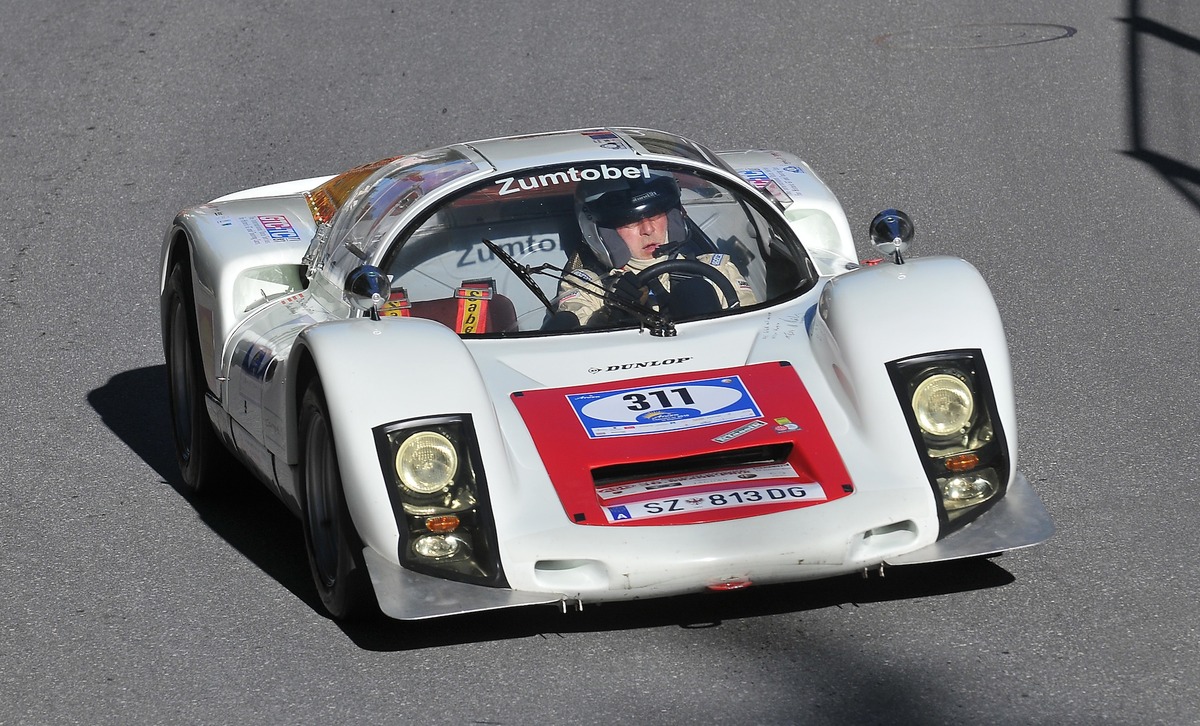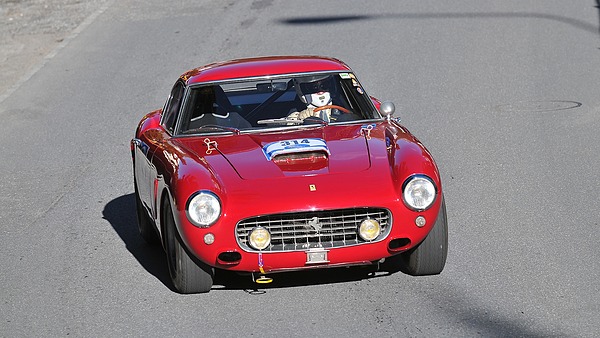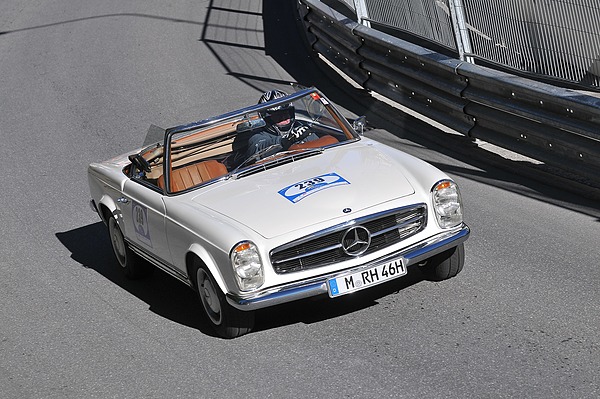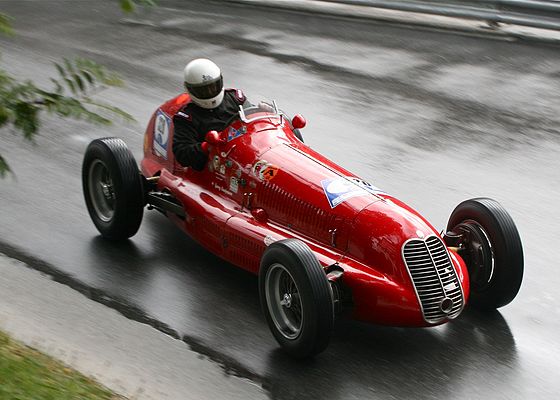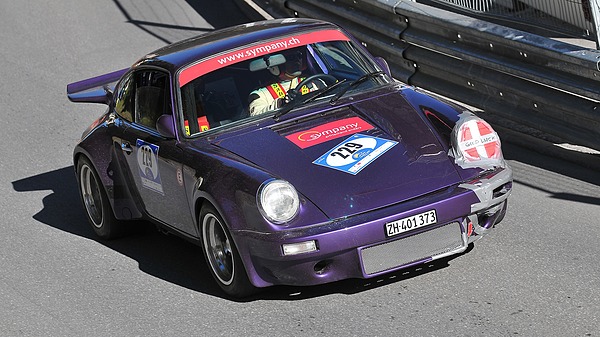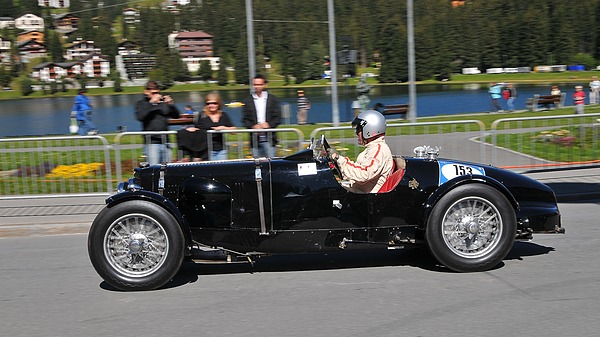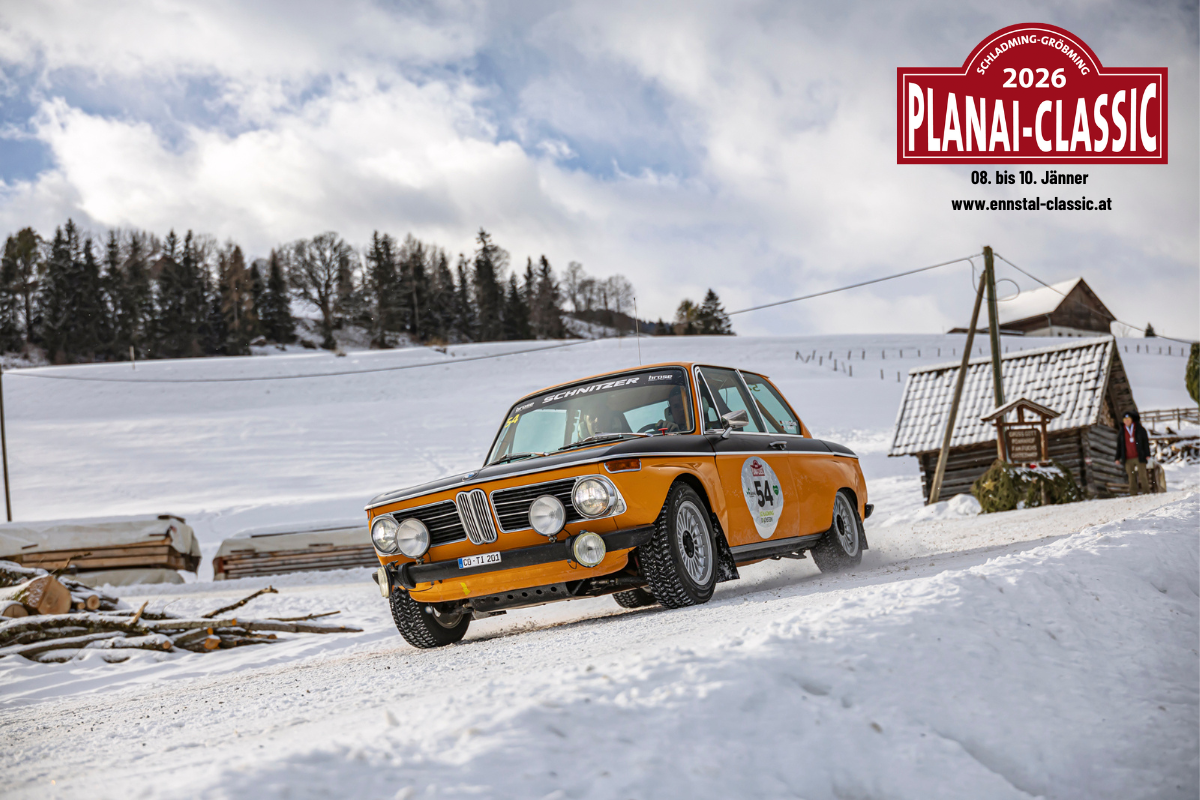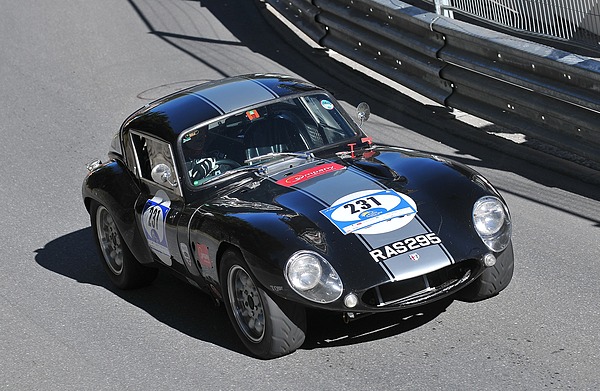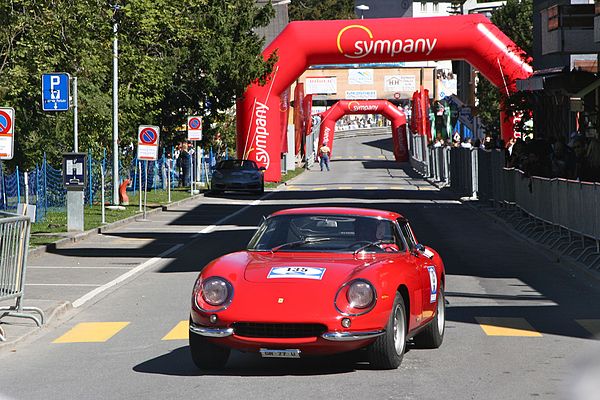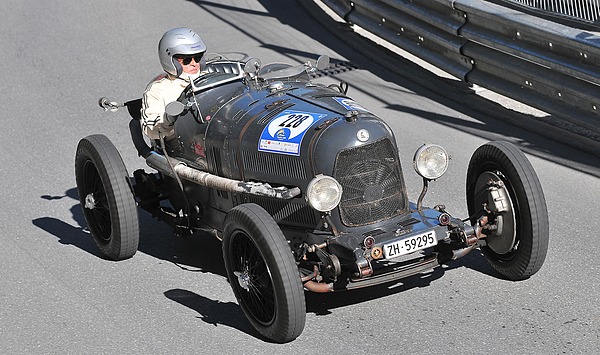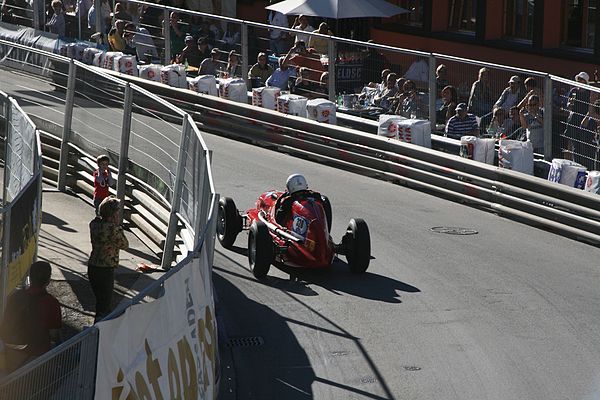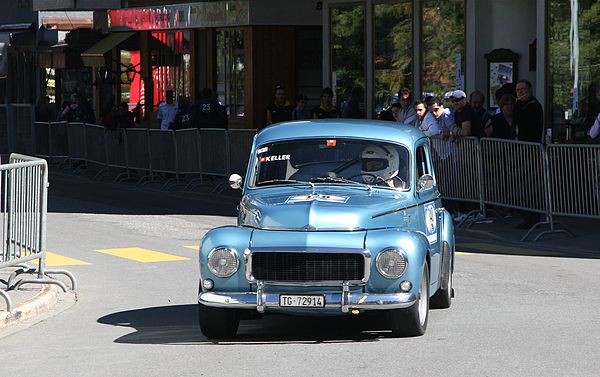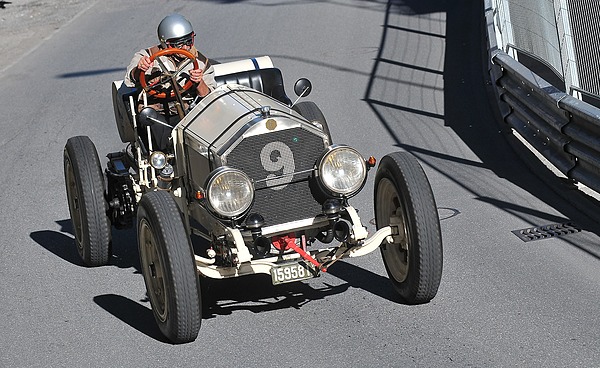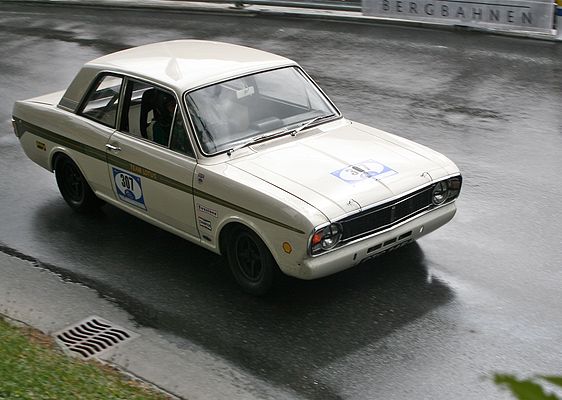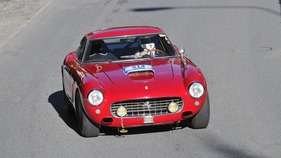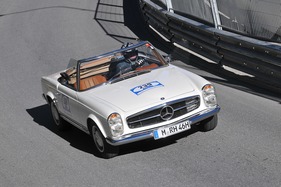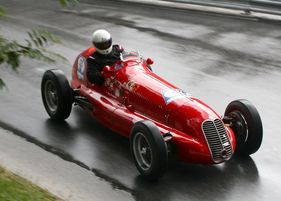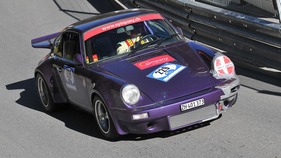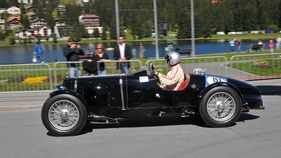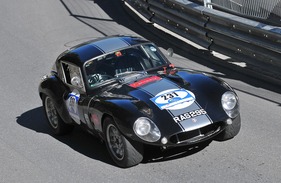The Arosa ClassicCar Hillclimb 2010 was a complete success with spectators, participants, sponsors and organizers. Brilliant weather over the weekend, a diverse field of participants and a well-organized course of events without any major delays provided the perfect setting for a memorable event. For once, however, things should not be described here from a spectator's perspective, but from a rider's perspective.
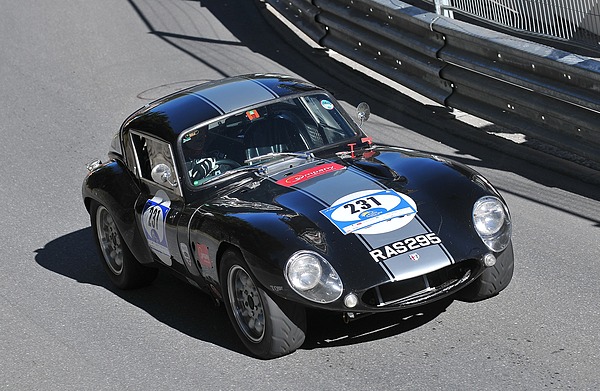
Thursday, September 9, 2010 - Arrival, scrutineering and Corso
About half of the riders arrive on the road and can therefore already enjoy the 7.8 km long ascent with 78 bends from Langwies to Arosa (and a further 280 bends beforehand). However, there is neither space nor time for a training ride. No problem, you're already happy if you can remember at least part of the route. Soon you are briefed in the paddock and can queue for the administrative driver reception. An FIA driver's license is required for participants in the Competition class, where the race is timed, while a normal driver's license is sufficient for the Regularity class, where two runs have to be completed in hopefully the same time.
Now you receive the start numbers and some information. This is where the wheat is separated from the chaff. The professionals are able to apply start numbers to even the most complex vehicle surfaces without creases or folds, while others either don't have high standards or simply don't have the talent for it. Technical scrutineering is soon approaching. For road-legal vehicles, a glance at the vehicle registration document, a check of the engine compartment and verification of helmet approval are sufficient. For racing vehicles, the FIA-HTP and the car are scrutinized more closely. Once these hurdles have been cleared, it's time for a relaxed chat with friends and colleagues. On Thursday evening in Arosa, there is typically a parade of the participating vehicles through the village, not very fascinating from a driving point of view, but a successful opportunity to introduce the locals and tourists to the cars and their soundscape.
Friday, September 10, 2010 - Training day
On the training day, each participant can take part in two runs to find out about the route and achieve target times. The procedure is always the same. The field of one of the three categories will be led by a police escort on the open road from Arosa down to Langwies. The route is then closed and the participants have the 7.8 km to themselves for the ascent. The start is at 30-second intervals, longer intervals can be requested if an overtaking maneuver would otherwise be necessary.
For the first time in 2010, the training times are decisive for the starting order on the training days - a good idea. Overtaking is difficult on a hill climb due to the narrow roads and lack of straights and is really only possible if the rider in front is watching out for the rider behind. The training day begins damp and cold, not a good basis for fast times, but an increased risk for vehicles and drivers. Five or six participants run out of talent, or rather the road. Thankfully, however, there were only bodywork damage and injured pride to report. The afternoon race then takes place on dry roads, the times are 30 to 90 seconds faster and best times under 5 minutes are already being set. However, some cars are still suffering from the high humidity and are clearly misfiring. In the evening, however, (almost) everyone is satisfied and looking forward to the races at the weekend.
Saturday, September 11, 2010 - Weisshorn Trophy
Saturday is all about consistency for all participants, including the Regularity class. Both runs should be completed in the same time if possible, whereby speed is secondary. However, professionals know that it is easier to ride fast or close to your personal limit. No one tries to ride the whole course at a constant speed, because that would be impossible or very slow and boring due to the bends.
The fact that the winner was only 1 hundredth of a second off at the end is down to chance, as he was driving without a watch! Up to 18th place, all riders had a difference of less than one second, and that with a good 5 to 7 minutes riding time, which is also worth seeing internationally. But the driver of an Austin Healey Sprite proved that you can also have a 2-minute difference. As always, however, many drivers were already chasing times on Saturday, so they were not worried about differences.
The results of the top 10 drivers:
1st Rübig Hermann in a Mercedes 250 SL (1 penalty point = 1 hundredth of a second difference)
2nd Meier Thomas in a Lancia Beta Montecarlo (7 penalty points)
3rd Vonmoos Christoffel in a Ford Mustang 289 Cabrio (13 penalty points)
4th Schmid Peter in a Porsche 356 C (15 penalty points)
5th Braun Thomas in an Alfa-Romeo (15 penalty points) 5th Braun Thomas in an Alfa-Romeo (13 penalty points). Braun Thomas on Alfa-Romeo Giulia Sprint GTA (16 penalty points)
6. Huber Peter on Porsche Carrera RSR (27 penalty points)
7. Oechsle Christopher on Porsche 356 SC (29 penalty points)
8. Knobel Heinz on Eigenbau Monoposto D (31 penalty points)
9. Halter Michael on Porsche 911 S (38 penalty points)
10. von Rotz Bruno on JWF Milano GT (44 penalty points)
Sunday, September 12, 2010 - Regularity and Competition
On Sunday, the mode did not change for most drivers, but the Competition class drove to the best time and thus the day's victory. Patrick Heintz in his rally-proven Ford Escort RS (1980) finished just ahead of Dr. Armin Zumtobel with a time of 4:39.79, who also drove the ex-Künis-Porsche Carrera 6 (906) up the hill in 4:41.17, as always with a captivating driving style. Times in this range mean an average of over 100 km/h, which can be considered pretty smooth given the track layout. Jürg Tobler in a Chevron B17, Thomas Studer in a Ford Shelby GT350 and Dario Pergolini in an Austin Healey 3000 MK II followed closely behind. The times in the afternoon tended to be slower. But not so with the regularity drivers. Roger Heimgartner in his Alfa-Romeo GTV 6 showed everyone who was the master and drove up the hill twice with a time difference of just 3 hundredths. He was followed by the well-known pop singer Peter Kraus in his beautiful AC ACE Bristol D2 with 12 hundredths, Peter Keller in a Volvo PV 544, Daniel Ueberhard in an Audi Quattro, Martino Barmettler in a Sport Quattro S1 and Hanspeter Weiler in a Fiat 124 Abarth CSA.
Once again, 12 participants managed to finish with an overall difference of less than one second - chapeaux! The driving was equally fluid and some of the times would probably have been enough for a category win in the Competition class. At the end, there were happy pilots everywhere and every participant was able to talk about hairy situations, technical problem areas or personal improvements. For most of them, a return next year is already firmly planned, ideally with more power and even better preparations à la YouTube video study.
How do 78 bends over 7.8 km feel at race pace?
The impressions of the varied ascent are difficult to convey. The start is followed by a meandering uphill section, which is interrupted by a few tight bends. For most riders, this means second to third gear. This is followed by a 1.2 km long downhill section, a rarity in hill climbs with their own challenges.
To slow the cars down in the middle of this section, a left-right-left chicane has been added, followed by another curved straight and then you have to brake for the next twisty section. Now it's uphill again and a tight hairpin forces most riders into first gear. Then it's up towards Litzelrüti, where the fastest section follows. This is followed by more flowing bends, two bridge crossings and two more hairpins, all in a colorful mix.
There is another fast and flowing section up to the village of Arosa, which most riders will probably take in third gear. The passage through the village itself is reminiscent of Monte-Carlo with its tight bends secured by crash barriers, whereby the last two bends in particular require courageous braking and careful negotiation as they are narrow and interspersed with bumps. Not all drivers managed this without problems, which led to undesirable deformation of the sheet metal and plastic.
Shortly after crossing the finish line, the time display flashes up and you can be more or less satisfied as a driver. In any case, you are sweaty and exhausted, because however short 5 or 6 minutes may seem, the physical effort is still considerable. But hardly anyone thinks about stock market prices, banking crises or personal conflicts while riding uphill, pure concentration is the order of the day, anything else would be out of the question at a speed of 80 km/h or more, including hairpin bends and bridge bends.
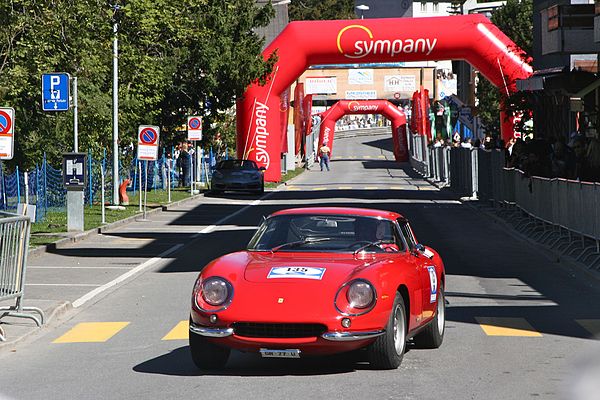
Other observations and impressions
As always, the catering and hospitality was excellently organized, with something for everyone. The evening events also left satisfied faces throughout, albeit with a few full-blown hangovers. Route preparation and the route service - thanks to our friends in Salzburg and Voralberg, but also in Switzerland - were first class. And last but not least, the field of vehicles should also be mentioned, which, although some of the highlights from previous years were missing, was balanced overall and interspersed with fine gems, as the photo gallery shows.
Finally, a big thank you to the locals and the tourists who came to the event, whose enthusiasm is what makes this event possible in the first place. And only cheering spectators make an event really good!
